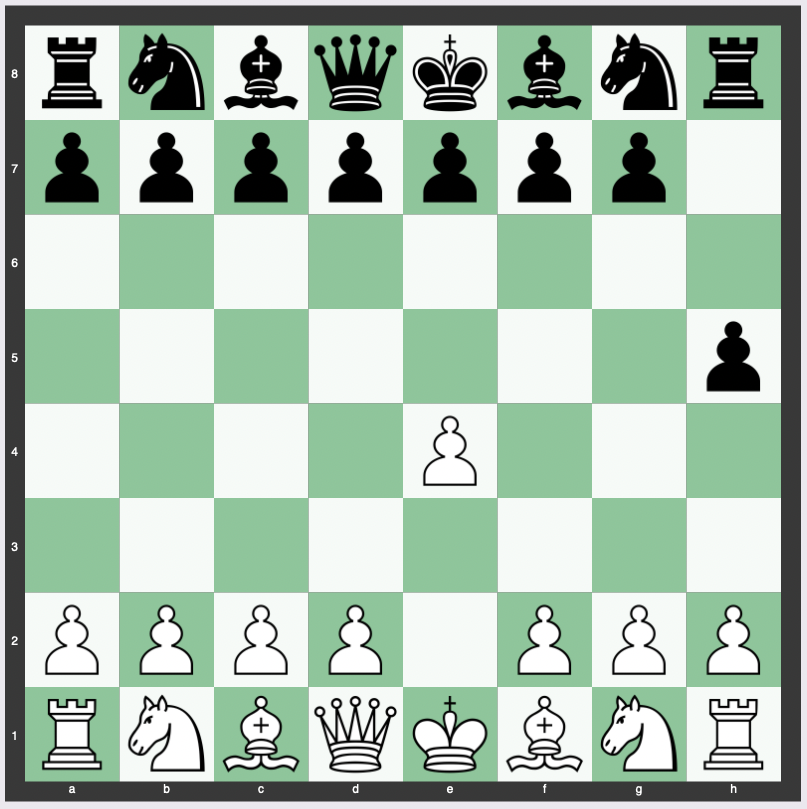The Goldsmith Defense, also known as the Pickering Defense, is a rare and unorthodox chess opening that begins with the moves 1. e4 h5.
As a seldom-explored opening, it tends to lead to non-standard positions and can be an intriguing choice for players looking to surprise their opponents.
Here we look into the details of the Goldsmith Defense, exploring its move order, underlying theory, different variations, its historical background, and how suitable it is for players at different levels.
Move Order of the Goldsmith Defense (Pickering Defense)
The move order of the Goldsmith Defense (Pickering Defense) is:
- e4 h5
This opening sequence consists of White starting with the highly popular e4 move, while Black responds immediately with h5.

Theory, Strategy and Purpose of the Goldsmith Defense
The Goldsmith Defense is an unconventional response to the common e4 opening.
It aims to challenge traditional opening principles by moving a flank pawn early in the game.
The purpose behind this opening is often to confuse the opponent or to steer the game into less familiar territory.
While it can be seen as provocative, it doesn’t directly challenge the central control by White, leading to unique and complex positions.
Variations of the Goldsmith Defense
There are several variations that can arise from the Goldsmith Defense, depending on how White responds.
A common reply is 2. d4, advancing the central pawn and ignoring Black’s flank pawn move.
White can also play 2. Nf3, developing a piece and preparing to challenge Black’s pawn structure.
More aggressive options like 2. g4 are also possible, directly attacking the h5 pawn.
History of the Goldsmith Defense
The Goldsmith Defense has never been part of mainstream chess opening theory.
Its origins are unclear, but it has been occasionally employed by club players and even some professionals as a surprise weapon.
Despite its obscurity, the opening has seen sporadic use in tournament play, especially as a way to catch opponents off guard.
Is the Goldsmith Defense Good for Beginners or Intermediates?
The Goldsmith Defense can be a fun and unexpected choice for club players and intermediate-level competitors.
For beginners, it might be challenging to play due to the unconventional nature of the positions that arise.
Understanding the resulting complex positions requires a deeper knowledge of chess principles, making it less suitable for those just starting to learn the game.
How Often Is the Goldsmith Defense Played at the Grandmaster Level?
The Goldsmith Defense is rarely seen at the Grandmaster level.
Most top players prefer well-established openings that conform to traditional chess principles.
The unorthodox nature of the Goldsmith Defense makes it a risky choice at the highest levels of play, where opponents are well-prepared to handle unexpected strategies.
However, it can still occasionally be employed as a surprise weapon in specific situations.
Conclusion
The Goldsmith Defense (1. e4 h5) is an intriguing and unusual chess opening that defies traditional chess principles.
While it offers a refreshing divergence from standard play, its suitability varies widely among different levels of players.
Mostly employed to catch opponents off guard, it can provide exciting and complex positions, but it may not be the best choice for beginners.
Its rarity at the Grandmaster level reflects its risky nature, but for those looking to explore a path less traveled in the chess world, the Goldsmith Defense offers a fascinating journey.


